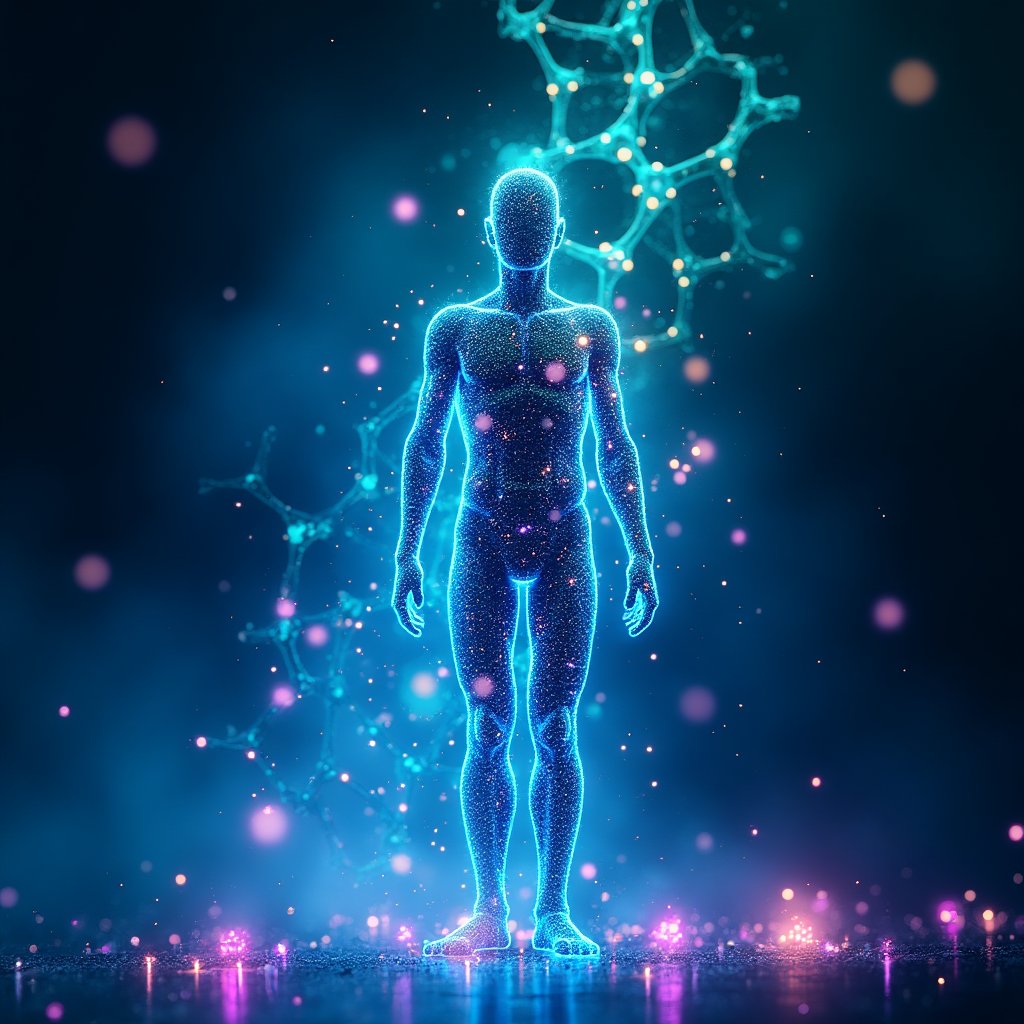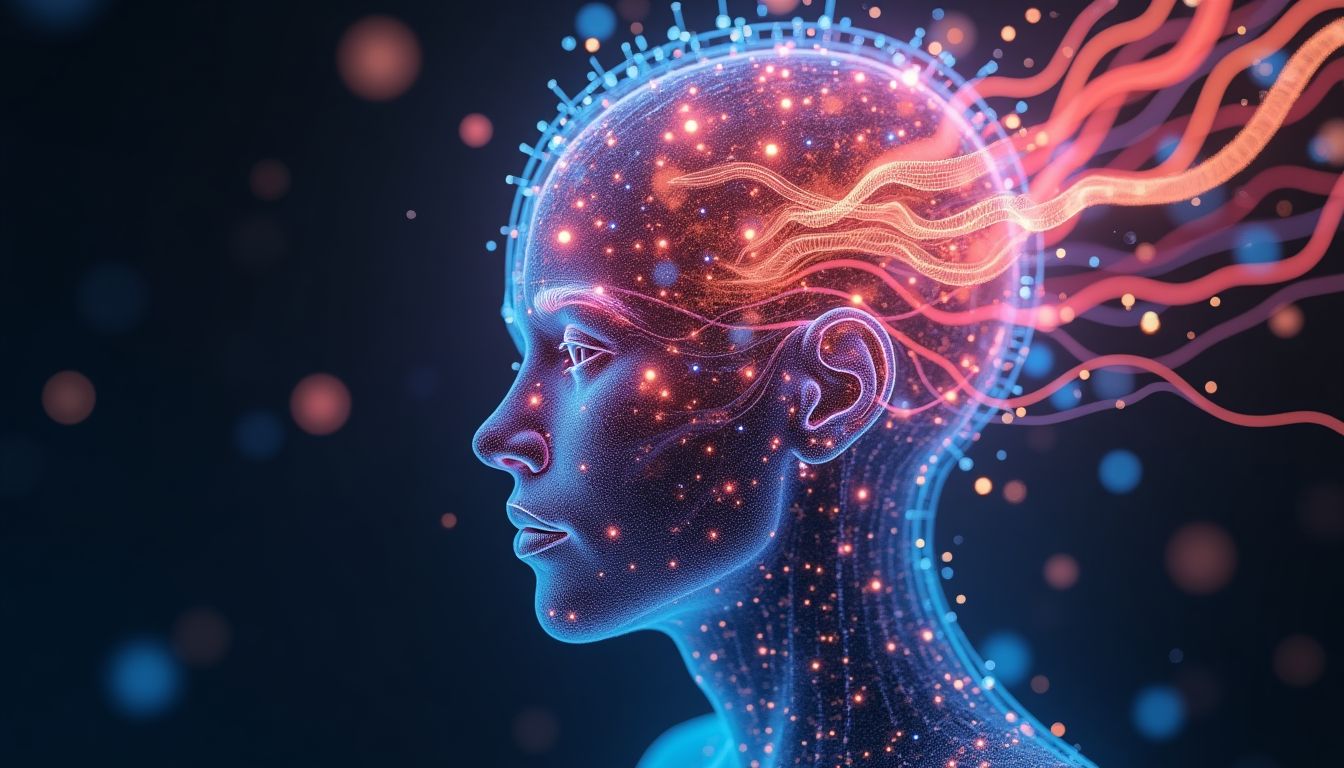“The fear of death follows from the fear of life. A man who lives fully is prepared to die at any time.” – Mark Twain. Twain’s words, while poetic, might soon feel outdated. What if death wasn’t the inevitable endgame? What if aging, the slow march toward mortality, could be stopped—or better yet, reversed? This isn’t the plot of a sci-fi novel. It’s the promise of Artificial General Intelligence (AGI), a technology that could fundamentally alter what it means to be human.
AGI, the next evolution of artificial intelligence, isn’t just about smarter chatbots or self-driving cars. It’s about machines that can think, learn, and solve problems across a wide range of domains—including the complex biological puzzle of aging. Think of it as the ultimate brainpower, capable of outthinking even the most brilliant human minds. And one of its most tantalizing applications? Conquering aging, the so-called “final frontier” of human biology.
Aubrey de Grey, the maverick biogerontologist, has long argued that aging is a disease—and one that can be cured. Ray Kurzweil, the futurist and Google’s Director of Engineering, predicts that by 2045, we’ll reach the “Singularity,” a point where technology merges with biology to extend human life indefinitely. Even Elon Musk, though more cautious, has hinted at the transformative potential of AGI. But what does this mean for you and me? Could we one day wake up in a world where wrinkles are optional, and death is a choice?
1. The Science of Aging: Understanding the Enemy
Before we can defeat aging, we need to understand it. Aging isn’t just about gray hair or creaky knees. It’s a complex biological process involving cellular damage, genetic changes, and environmental factors. Let’s break it down layer by layer.
1.1 The Biology of Aging
Aging happens at the cellular level. Think of your cells as tiny factories. Over time, their machinery wears out. Telomeres, the protective caps at the ends of your chromosomes, shorten with each cell division. Mitochondria, the powerhouses of your cells, become less efficient. And DNA damage accumulates, leading to errors that can’t always be fixed. It’s like running a car without ever changing the oil—eventually, it breaks down.
But it’s not just about wear and tear. Epigenetic changes—alterations in how your genes are expressed—also play a role. These changes can turn genes on or off, affecting everything from metabolism to stress responses. Understanding these mechanisms is key to developing therapies that could slow or reverse aging.
1.2 Current Longevity Research
Scientists are already exploring ways to combat aging. Some of the most promising approaches include:
- Caloric restriction: Studies show that eating less—without malnutrition—can extend lifespan in various organisms, from worms to primates. It’s like giving your cells a workout, making them more resilient.
- Senolytics: These drugs target and eliminate “senescent” cells—cells that have stopped dividing and contribute to aging. Think of them as the trash collectors of your body.
- NAD+ boosters: NAD+ is a molecule that plays a crucial role in energy production and DNA repair. Boosting its levels could rejuvenate aging cells.
- CRISPR: This gene-editing technology could one day allow us to repair or replace damaged genes, effectively turning back the clock.
But here’s the catch: human biology is incredibly complex. What works in mice might not work in humans. And even if it does, it could take decades to prove it’s safe and effective.
1.3 The Limitations of Human Research
Human trials are slow, expensive, and fraught with ethical challenges. For example, studying aging requires tracking individuals over many years—something that’s not always feasible. And because aging involves so many interconnected factors, it’s hard to isolate the effects of a single intervention.
That’s where AGI comes in. By simulating biological systems, AGI could predict the outcomes of anti-aging therapies without the need for lengthy trials. It could analyze vast datasets to identify patterns and propose novel treatments. In short, AGI could do in months what would take human researchers decades.
2. AGI’s Role in Decoding Aging
Artificial General Intelligence (AGI) isn’t just about robots folding your laundry or driving your car (though that’s cool too). It’s about DeepMind and others revolutionizing how we tackle the biggest problems of humanity—like aging. Let’s dive into how AGI could turn the tide against our biological clocks.
2.1 Simulating Biological Systems
Imagine if we could create a digital twin of your entire body—cells, organs, and all—and test anti-aging therapies on it without ever touching a human test subject. AGI could make this a reality. By simulating biological systems in silico (that’s science-speak for “on a computer”), AGI could predict how drugs, therapies, or lifestyle changes might impact aging. It’s like having a NVIDIA-powered crystal ball for your health.
2.2 Accelerating Drug Discovery
Drug discovery is slow, expensive, and often frustrating. AGI could change that by analyzing mountains of biological and genetic data in record time. Think of it as a supercharged version of Google Scholar—AGI could sift through studies, identify patterns, and pinpoint compounds that might extend your lifespan. Companies like Insilico Medicine are already using AI to discover new drugs faster and cheaper than ever before. Why wait decades for a miracle pill when AGI could do the job in months?
2.3 Personalized Medicine
One-size-fits-all medicine is so 20th century. AGI could tailor anti-aging treatments to your unique genetic makeup. No more guessing games—just a customized plan to keep you healthy and youthful. And it doesn’t stop there. AGI could continuously monitor your body, tweaking treatments in real-time as your needs change. It’s like having a personal trainer, nutritionist, and doctor rolled into one… and it never sleeps. Companies like 23andMe are already laying the groundwork for this future.
3. Ethical and Societal Implications of Biological Immortality
So, we’ve got AGI cracking the code of aging. Sounds amazing, right? But before we start popping immortality pills, let’s consider the ethical and societal can of worms we might be opening. After all, living forever isn’t all sunshine and rainbows.
3.1 The Moral Dilemma of Eternal Life
First up: overpopulation. If no one dies, Earth could get pretty crowded. And then there’s the issue of resources—food, water, housing. Would immortal humans just keep consuming until the planet’s a barren wasteland? And let’s not forget inequality. If only the rich can afford immortality, we’re looking at a future where the 1% live forever while the rest of us… don’t. Would immortality become the ultimate luxury item, like a Ferrari for your lifespan?
3.2 Redefining Humanity
Then there’s the psychological impact. Would living forever make life less meaningful? Philosophers like Søren Kierkegaard argued that our mortality gives life its urgency and purpose. Without the ticking clock, would we just procrastinate forever? And what about relationships? Would an immortal you and an immortal me still care about each other, or would we just drift apart over centuries?
3.3 Regulatory and Governance Challenges
Who gets to control AGI-driven immortality technologies? Governments? Corporations? The Illuminati? We’ll need ethical frameworks to ensure these technologies are used for the greater good, not just the greater profit. Organizations like the World Health Organization and the United Nations will need to step up to the plate. And let’s not forget about rogue nations or individuals who might misuse these technologies for nefarious purposes. After all, immortality in the wrong hands could be downright dangerous.
4. Historical and Philosophical Perspectives on Immortality
4.1 Humanity’s Quest for Eternal Life
From the ancient myths of the Fountain of Youth to the alchemists’ search for the Elixir of Life, humans have always dreamed of cheating death. The idea of immortality isn’t new—it’s woven into the fabric of our stories, religions, and even early science. For instance, the Chinese emperor Qin Shi Huang sent expeditions to find the secret to eternal life, while medieval alchemists like Paracelsus experimented with potions and elixirs. These efforts may seem quaint now, but they reveal a deep-seated human desire to transcend mortality.
Fast forward to the 21st century, and the quest for immortality has taken a scientific turn. Organizations like the Buck Institute for Research on Aging and researchers like Dr. David Sinclair are exploring the biological mechanisms of aging. But the dream remains the same: to live longer, healthier lives—or perhaps, to live forever.
4.2 Philosophical Debates on Immortality
Philosophers have long grappled with the idea of eternal life. On one side, transhumanists argue that technology can and should be used to overcome human limitations, including death. Figures like Ray Kurzweil envision a future where humans merge with machines, achieving a form of digital immortality. On the other side, existentialist thinkers like Jean-Paul Sartre and Albert Camus argue that death gives life meaning. Without the ticking clock, would we lose our drive to achieve, create, and love?
Consider this thought experiment: If you could live forever, would you still value your time? Would relationships, art, and innovation hold the same weight if they weren’t fleeting? These questions aren’t just philosophical—they’re deeply personal. They force us to confront what it means to be human.
4.3 Lessons Learned from Historical Failures
History is littered with cautionary tales about the pursuit of immortality. Take the story of Gilgamesh, the ancient Mesopotamian king who sought eternal life only to realize that immortality wasn’t what he truly wanted. Or consider the alchemists, whose quest for the Philosopher’s Stone often ended in tragedy. These stories remind us that the pursuit of immortality is fraught with risks—not just scientific, but ethical and existential.
Key lessons from history:
- Hubris is dangerous: Overconfidence in our ability to conquer nature can lead to unintended consequences.
- Balance is key: Innovation must be tempered with caution and ethical considerations.
- Immortality isn’t always desirable: As Gilgamesh learned, eternal life without purpose or connection may be a curse, not a blessing.
5. The Future of AGI and Aging: A Vision for 2050
5.1 Technological Convergence
By 2050, the convergence of AGI, nanotechnology, robotics, and biotechnology could revolutionize how we approach aging. Imagine a world where nanobots patrol your bloodstream, repairing damaged cells in real-time. Or where AGI-powered systems monitor your health 24/7, predicting and preventing age-related diseases before they even start. This isn’t science fiction—it’s the logical next step in the evolution of medicine.
Key technologies driving this vision:
- AGI: Artificial General Intelligence could model and optimize anti-aging therapies at an unprecedented scale.
- Nanotechnology: Tiny machines could repair cellular damage, extending lifespan and improving health.
- Biotechnology: Advances in gene editing, like CRISPR, could eliminate genetic causes of aging.
This convergence could lead to “bio-digital immortality,” where humans exist as a blend of biological and digital entities. Think of it as the ultimate upgrade—a fusion of flesh and code that transcends the limitations of both.
5.2 Economic and Cultural Shifts
If AGI makes immortality possible, it will disrupt entire industries. Healthcare, insurance, and retirement planning will need to adapt to a world where people live indefinitely. Imagine a 150-year-old CEO or a 200-year-old artist still in their prime. The concept of “retirement” might become obsolete, replaced by lifelong learning and reinvention.
Cultural narratives around aging and death will also shift. Instead of viewing old age as a decline, society might celebrate it as a time of continued growth and contribution. But this utopian vision comes with challenges. How do we ensure equitable access to immortality technologies? And what happens to the concept of generational turnover if people stop dying?
5.3 Global Collaboration
Achieving AGI-driven immortality will require unprecedented global collaboration. Governments, corporations, and academic institutions must work together to fund research, establish ethical guidelines, and ensure equitable distribution of technologies. Organizations like the World Health Organization and the United Nations could play a key role in coordinating these efforts.
Key steps for global collaboration:
- Establish international research consortia to pool resources and expertise.
- Develop ethical frameworks to guide the development and deployment of immortality technologies.
- Ensure that benefits are shared equitably, avoiding a future where only the wealthy can afford eternal life.
By 2050, the dream of defeating aging could become a reality—but only if we approach it with wisdom, humility, and a commitment to the common good.
6. AI Solutions: How Would AGI Tackle Aging?
6.1 Data Aggregation: The Foundation of AGI-Driven Research
AGI’s first step in tackling aging would be to compile and analyze every piece of biological, genetic, and medical data ever collected. This includes everything from telomere studies to epigenetic markers, mitochondrial health, and even lifestyle factors like diet and exercise. Imagine a digital library of human biology so vast that it dwarfs the Library of Congress. AGI would sift through this data, identifying patterns and correlations that human researchers might miss. For example, it could cross-reference genetic mutations with longevity data from centenarians to pinpoint the genes most responsible for aging.
Key collaborators in this phase would include institutions like the Broad Institute, which specializes in genomic research, and 23andMe, which has amassed a treasure trove of consumer genetic data. By pooling resources, AGI could create a unified, global database of aging research.
6.2 Modeling: Simulating the Human Body in Silico
Once the data is aggregated, AGI would build detailed simulations of human biology. These models would range from individual cells to entire organ systems, allowing researchers to test interventions in a virtual environment. For instance, AGI could simulate the effects of a new senolytic drug on a virtual heart, predicting its efficacy and potential side effects before a single human trial begins.
This approach would revolutionize drug discovery, reducing the need for costly and time-consuming animal and human trials. Companies like Insilico Medicine are already pioneering this field, using AI to accelerate the development of anti-aging therapies. AGI would take this to the next level, creating simulations so accurate that they could replace traditional trials altogether.
6.3 Hypothesis Generation: Unleashing AGI’s Creativity
AGI’s ability to generate hypotheses is where things get truly exciting. By analyzing patterns in the data, AGI could propose entirely novel approaches to combating aging. For example, it might suggest combining CRISPR gene editing with epigenetic reprogramming to reset cellular aging clocks. Or it could identify a previously overlooked protein that plays a key role in mitochondrial health.
This phase would require collaboration with leading researchers like Dr. David Sinclair, whose work on NAD+ boosters has already shown promise in reversing aging. AGI could take Sinclair’s research to the next level, identifying new compounds and therapies that extend human lifespan even further.
6.4 Virtual Testing: Running Millions of Simulated Trials
With hypotheses in hand, AGI would run millions of virtual trials to test their efficacy. These simulations would account for every variable, from genetic differences to environmental factors, ensuring that the results are as accurate as possible. For example, AGI could simulate the effects of a new anti-aging drug on a virtual population of 10,000 people, predicting how it would perform in the real world.
This approach would drastically reduce the risk of failure in human trials, saving time and resources. It would also allow researchers to fine-tune therapies before they ever reach a patient. Companies like NVIDIA, which specializes in AI-driven simulations, would play a key role in this phase.
6.5 Iterative Optimization: Refining the Perfect Anti-Aging Therapy
Finally, AGI would continuously refine its models and hypotheses, iterating until it finds the most effective anti-aging therapies. This process would be guided by real-world data, with AGI learning from each new discovery to improve its predictions. For example, if a new therapy shows promise in early trials, AGI could tweak its formula to maximize efficacy and minimize side effects.
This phase would require close collaboration with regulatory bodies like the FDA to ensure that new therapies meet safety and efficacy standards. It would also involve partnerships with pharmaceutical companies like Pfizer and Novartis, which have the resources to bring new drugs to market.
Action Schedule/Roadmap (Day 1 to Year 2)
Day 1: Assemble the Task Force
- Recruit leading scientists in AI, biology, and ethics, including Demis Hassabis (Google DeepMind), Dr. David Sinclair (Harvard), and Dr. Feng Zhang (MIT).
- Secure funding from governments, corporations, and philanthropic organizations like the Bill & Melinda Gates Foundation.
Week 1: Launch the Centralized Database
- Create a global database of aging research data, integrating datasets from institutions like the Broad Institute and 23andMe.
- Develop AGI systems optimized for biological modeling, leveraging expertise from NVIDIA and Insilico Medicine.
Month 1: Ethical Frameworks and Pilot Projects
- Conduct workshops on ethical frameworks for immortality research, involving ethicists from Harvard and Oxford.
- Initiate pilot projects using AGI to simulate aging processes, with a focus on cellular senescence and mitochondrial dysfunction.
Year 1: Publish Findings and Begin Virtual Testing
- Publish findings from AGI-driven aging models in leading journals like Cell and Nature.
- Begin virtual testing of proposed anti-aging therapies, using simulations to predict efficacy and safety.
Year 1.5: Refine and Optimize Therapies
- Refine therapies based on virtual testing results, iterating until optimal outcomes are achieved.
- Collaborate with regulatory bodies like the FDA to prepare for human trials.
Year 2: Initiate Human Trials
- Begin human trials for the most promising AGI-identified treatments, focusing on safety and efficacy.
- Engage pharmaceutical companies like Pfizer and Novartis to bring therapies to market.
The Dawn of a New Era: Redefining Life and Death
Imagine a world where aging is no longer a foregone conclusion, where the wrinkles on your face and the aches in your bones are relics of a bygone era. This is the promise of AGI-driven longevity research—a future where humanity transcends its biological limits and redefines what it means to be alive.
But this future is not without its challenges. The ethical implications of biological immortality are profound, raising questions about overpopulation, resource scarcity, and societal inequality. Who gets to live forever? And what happens to the meaning of life when death is no longer inevitable?
These are not easy questions, but they are ones we must confront as we stand on the brink of this new era. The fusion of AGI and longevity research has the potential to transform humanity in ways we can scarcely imagine. It could extend our healthspan, allowing us to live longer, healthier lives. It could unlock the secrets of our biology, giving us unprecedented control over our own bodies. And it could fundamentally alter our relationship with life and death, challenging us to rethink what it means to be human.
As we embark on this journey, we must do so with caution and humility. The road ahead is fraught with risks, but the rewards are unparalleled. The question is no longer *if* we can defeat aging, but *how* and *when.* And when that day comes, it will mark the dawn of a new era—one in which humanity takes its first steps toward immortality.
What do you think? Are we ready to embrace a world without aging? Or are we playing with forces we don’t fully understand? Share your thoughts in the comments below, and don’t forget to subscribe to our newsletter for more insights into the future of technology and humanity. Together, we can build a brighter future—one where the "Shining City on the Web" becomes a reality for all.
FAQ
Q1: What is AGI?
A1: Artificial General Intelligence (AGI) is a type of AI that can understand, learn, and apply knowledge across a wide range of tasks, just like a human. Unlike narrow AI, which is designed for specific tasks (like recommending movies on Netflix), AGI can think and reason like a person. Think of it as a super-smart assistant that can solve problems, create art, or even help cure diseases.
Q2: Is biological immortality possible?
A2: While it sounds like science fiction, scientists are making progress. Researchers like Dr. David Sinclair at Harvard are studying how to slow or even reverse aging. AGI could speed up this research by analyzing massive amounts of data and finding patterns humans might miss. So, while we’re not there yet, the possibility is becoming more real every day.
Q3: What are the risks of AGI-driven immortality?
A3: There are a few big risks to consider:
- Overpopulation: If people stop dying, Earth could get crowded fast.
- Inequality: Only the rich might afford immortality, creating a bigger gap between the haves and have-nots.
- Psychological Impact: Living forever might sound great, but it could also lead to boredom or existential crises.
These challenges mean we’ll need careful planning and global cooperation to make immortality fair and sustainable.
Q4: How soon could AGI solve aging?
A4: It’s hard to say for sure, but experts think it could take decades. However, AGI could speed things up dramatically. For example, Google DeepMind has already used AI to solve complex problems like protein folding, which could help us understand aging better. If AGI keeps advancing, we might see breakthroughs sooner than we think.
Q5: Who would have access to immortality technologies?
A5: This is a big question. Ideally, everyone should have access, but it might start with the wealthy or those in developed countries. Organizations like the World Health Organization and governments will need to work together to make sure these technologies are distributed fairly. Otherwise, we risk creating a world where only a few can live forever.
Q6: What are some current anti-aging treatments?
A6: Right now, scientists are exploring several promising treatments:
- Senolytics: Drugs that remove old, damaged cells.
- NAD+ Boosters: Supplements that help cells repair themselves.
- CRISPR: A gene-editing tool that could fix DNA damage. Learn more about CRISPR from Broad Institute.
These treatments are still in early stages, but AGI could help make them more effective and accessible.
Q7: What would happen to retirement if people stopped aging?
A7: Retirement as we know it might disappear. If people live longer, healthier lives, they might work for decades longer. This could change industries like insurance and healthcare. For example, companies like AARP might need to rethink their focus. On the flip side, longer lives could mean more time to pursue passions and hobbies.
Q8: What role do ethics play in AGI and immortality?
A8: Ethics are crucial. We need to ask questions like:
- Is it fair to let some people live forever while others don’t?
- How do we prevent overpopulation?
- What happens to the meaning of life if death is optional?
Organizations like the World Economic Forum are already discussing these issues to ensure AGI is used responsibly.
Q9: Could AGI help us live forever in a digital form?
A9: Some scientists think so. The idea of “mind uploading” involves transferring a person’s consciousness into a computer. While this is still science fiction, companies like Neuralink, founded by Elon Musk, are working on brain-computer interfaces that could one day make this possible. AGI could play a key role in making this a reality.
Q10: What can I do to support longevity research?
A10: You can:
- Donate to organizations like the Buck Institute for Research on Aging.
- Stay informed by following researchers like Dr. David Sinclair on social media.
- Advocate for ethical AI and longevity research in your community.
Every little bit helps in the fight against aging!
Q11: What’s the biggest challenge in curing aging?
A11: The biggest challenge is complexity. Aging isn’t caused by one thing—it’s a combination of factors like DNA damage, cellular wear and tear, and environmental stress. AGI could help by analyzing all these factors at once, but it’s still a massive puzzle. As MIT researcher Dr. Feng Zhang puts it, “We’re trying to solve the ultimate problem of biology.”
Q12: Will immortality change what it means to be human?
A12: Absolutely. If we stop aging, we’ll need to rethink everything—from careers and relationships to the meaning of life itself. Philosophers like Yuval Noah Harari argue that death gives life meaning. Without it, we’ll need to find new ways to create purpose and fulfillment.
Q13: What’s the first step toward immortality?
A13: The first step is understanding aging at a deeper level. AGI can help by analyzing data from studies like the National Institute on Aging and identifying patterns. Once we understand the root causes of aging, we can start developing treatments to slow or reverse it.
Q14: What’s the most exciting breakthrough in aging research?
A14: One of the most exciting breakthroughs is the discovery of senolytics—drugs that remove old, damaged cells. Studies from the Mayo Clinic have shown that these drugs can extend lifespan and improve health in mice. AGI could help us find even better senolytics and bring them to humans faster.
Q15: How can I learn more about AGI and aging?
A15: Start by exploring resources like:
- Lifespan.io, a nonprofit focused on longevity research.
- TED Talks by experts like Dr. David Sinclair.
- Books like Lifespan: Why We Age—and Why We Don’t Have To by Dr. Sinclair.
Stay curious, and who knows? You might be part of the generation that defeats aging!
Wait! There's more...check out our gripping short story that continues the journey: Crimson Coat
Disclaimer: This article may contain affiliate links. If you click on these links and make a purchase, we may receive a commission at no additional cost to you. Our recommendations and reviews are always independent and objective, aiming to provide you with the best information and resources.
Get Exclusive Stories, Photos, Art & Offers - Subscribe Today!





























Post Comment
You must be logged in to post a comment.